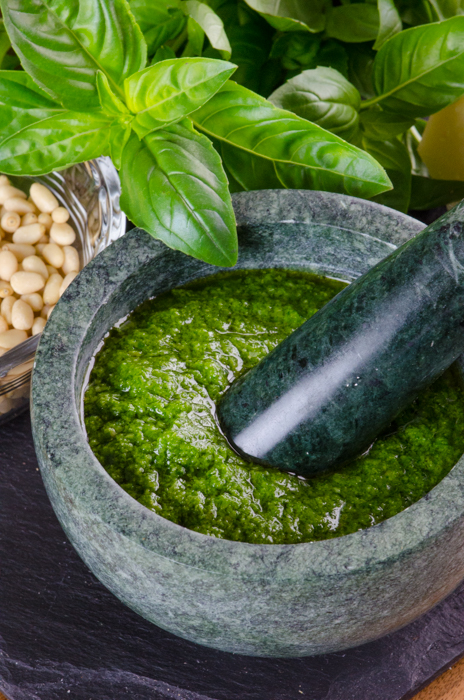 We are introducing a new Italiaoutdoors walking adventure to Liguria and Cinque Terre. Also known as the Italian Riviera, this is one of the most breathtaking coastlines in the world. Here, the sea and the mountains meet in dramatic fashion, and we spend a week exploring the fascinating history, indigenous wines, and traditional cuisine of the area among one of the most stunning backdrops in Italy.
We are introducing a new Italiaoutdoors walking adventure to Liguria and Cinque Terre. Also known as the Italian Riviera, this is one of the most breathtaking coastlines in the world. Here, the sea and the mountains meet in dramatic fashion, and we spend a week exploring the fascinating history, indigenous wines, and traditional cuisine of the area among one of the most stunning backdrops in Italy.
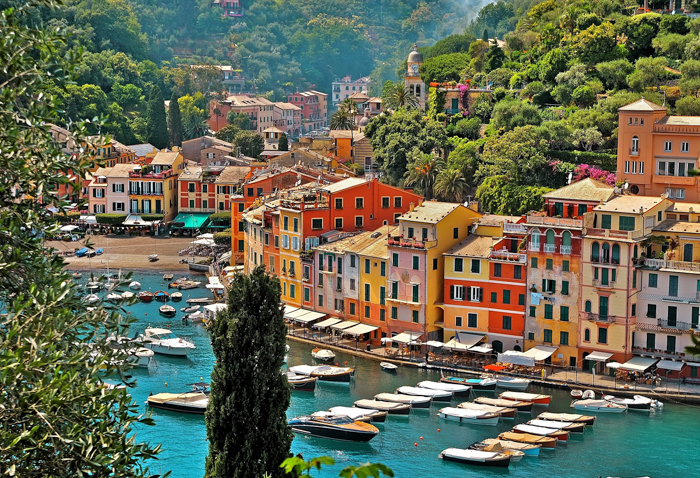 Probably the greatest gift of the Ligurian region to the culinary universe is its pride and joy – Pesto alla Genovese. Most Americans today are familiar with pesto, which originated in Genoa. The word ‘pesto’ derives from the Italian word “pestare”, which means to pound or crush. Traditionally, a pesto would be made using a mortar and pestle, with the ingredients being ‘ground’ with a circular motion of the pesto.
Probably the greatest gift of the Ligurian region to the culinary universe is its pride and joy – Pesto alla Genovese. Most Americans today are familiar with pesto, which originated in Genoa. The word ‘pesto’ derives from the Italian word “pestare”, which means to pound or crush. Traditionally, a pesto would be made using a mortar and pestle, with the ingredients being ‘ground’ with a circular motion of the pesto.
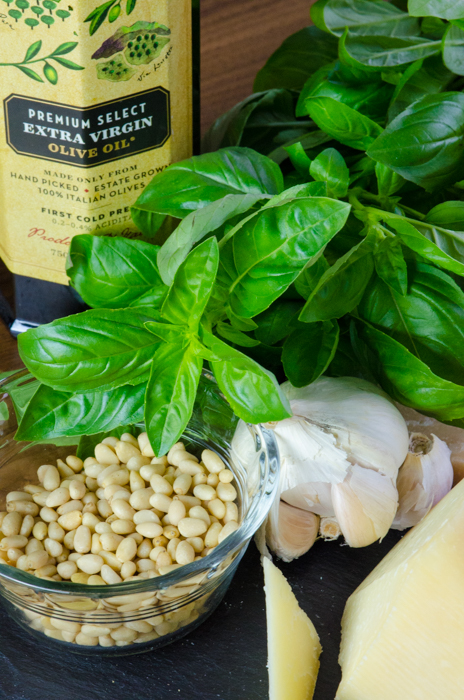 To a Ligurian, pesto requires very specific ingredients – light Ligurian DOP olive oil, Riviera pine nuts, fresh garlic from Vessalico (in western Liguria, near the French border) , sea salt, a 50-50 blend of Percorino sardo cheese from Sardinia (Sardo is richer while Pecorino Romano is more salty) and true Parmigiano-Reggiano, all combined with tender shade-grown basil. The traditional technique for making pesto utilizes a marble mortar and an olive wood pestle, the grinding releases the herb’s oils and maximum flavor and produces the preferred crushed texture. The cutting action of the food processor is believed to cut off the plants capillaries and prevents the fullest release of flavor. Today, however, finding pesto made using a mortar is rare indeed.
To a Ligurian, pesto requires very specific ingredients – light Ligurian DOP olive oil, Riviera pine nuts, fresh garlic from Vessalico (in western Liguria, near the French border) , sea salt, a 50-50 blend of Percorino sardo cheese from Sardinia (Sardo is richer while Pecorino Romano is more salty) and true Parmigiano-Reggiano, all combined with tender shade-grown basil. The traditional technique for making pesto utilizes a marble mortar and an olive wood pestle, the grinding releases the herb’s oils and maximum flavor and produces the preferred crushed texture. The cutting action of the food processor is believed to cut off the plants capillaries and prevents the fullest release of flavor. Today, however, finding pesto made using a mortar is rare indeed.
Outside the city of Genoa, the suburb of Prà produces what the locals consider the best basil for pesto. Here it is grown not in fields but in greenhouses, as Ligurians prefer greenhouse basil over that grown under direct sun, as the latter results in basil that is darker in color and tough. These greenhouse growers annually produce over 5 million plants.
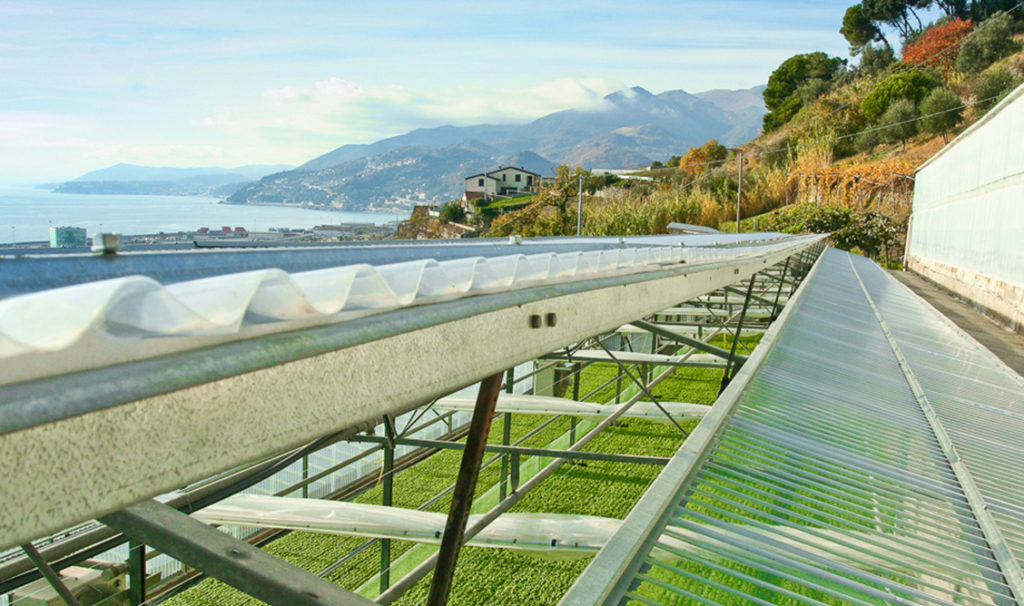 Why Prà? The same Genovese basil seed is now distributed world wide, and grown as far away as California. The microclimate around Prà is believed to be responsible for the quality – neutral soil, a southern exposure that gets sunny days year round, Mediterranean breezes keep the area cool so the basil doesn’t overheat and oxidize. The Italian government actually conducted experiments in which the same basil seeds were planted elsewhere – the result was a thicker stem, darker color, and more minty flavor. Today, the basil from Prà and nearby on the Ligurian coast has earned DOP status, recognizing the unique quality of the product.
Why Prà? The same Genovese basil seed is now distributed world wide, and grown as far away as California. The microclimate around Prà is believed to be responsible for the quality – neutral soil, a southern exposure that gets sunny days year round, Mediterranean breezes keep the area cool so the basil doesn’t overheat and oxidize. The Italian government actually conducted experiments in which the same basil seeds were planted elsewhere – the result was a thicker stem, darker color, and more minty flavor. Today, the basil from Prà and nearby on the Ligurian coast has earned DOP status, recognizing the unique quality of the product.
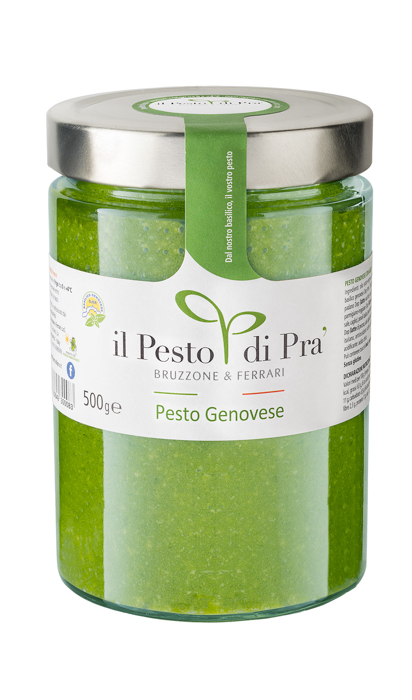 It is rare to find pesto in your grocery store that hails from Liguria. The largest pesto production facilities are actually in Japan and Denmark, and you can be pretty sure that any large producer is not using good quality extra virgin olive oil, pine nuts, cheeses and, of course, Prà basil. But you can easily make a great pesto at home – yes, even cheating with a food processor or blender – using quality ingredients. It will keep for a couple of days in the refrigerator, just store in a sealed container with a layer of olive oil on top to keep it from discoloring. But it goes wonderfully on so many things that it doesn’t need to last much longer than that!
It is rare to find pesto in your grocery store that hails from Liguria. The largest pesto production facilities are actually in Japan and Denmark, and you can be pretty sure that any large producer is not using good quality extra virgin olive oil, pine nuts, cheeses and, of course, Prà basil. But you can easily make a great pesto at home – yes, even cheating with a food processor or blender – using quality ingredients. It will keep for a couple of days in the refrigerator, just store in a sealed container with a layer of olive oil on top to keep it from discoloring. But it goes wonderfully on so many things that it doesn’t need to last much longer than that!
Pesto alla Genovese
3 cups tightly packed basil leaves
2 medium cloves garlic
2 tablespoons pine nuts
Sea salt
1/2 cup extra virgin olive oil
3 tablespoons finely grated Pecorino Sardo
3 tablespoons finely grated Parmigiano-Reggiano
Put the basil, garlic, pine nuts, a pinch of salt, and 1-2 tablespoons of the olive oil in the bowl of a food processor or blender. Start mixing, adding a little more olive oil if the ingredients don’t easily combine into a paste. Stop the food processor, add the pecorino and Parmigiano, and continue processing until you obtain a smooth, creamy paste. Transfer to a bowl and mix in the remaining olive oil. Adjust seasoning with salt to taste. Use immediately, or transfer to a seal-able container, cover the top with a thin layer of olive oil, which prevents it from discoloring, and store in the refrigerator until ready to use.
For the ambitious: Mortar and Pestle Method
Place the garlic, salt, pine nuts and basil in the mortar and start crushing with the pestle. Use a circular motion to press the pestle around the sides, rather than pounding. When these have melded together, add the cheeses and keep pressing until everything is blended into a paste. Move to a bowl and add the oil, mix until combined.

Pingback: Testaroli con Pesto alla Genovese | Italian Food, Wine, and Travel
Pingback: Testaroli con Pesto alla Genovese | Italian Food, Wine, and Travel
Pingback: Trofie con Pesto alla Genovese – Trofie Pasta with Pesto, Potatoes and Beans | Italian Food, Wine, and Travel